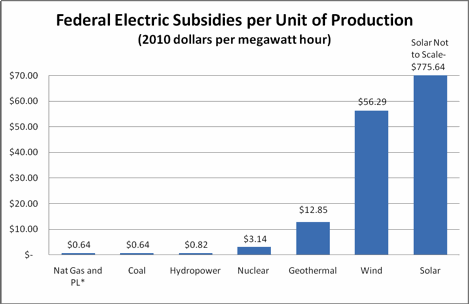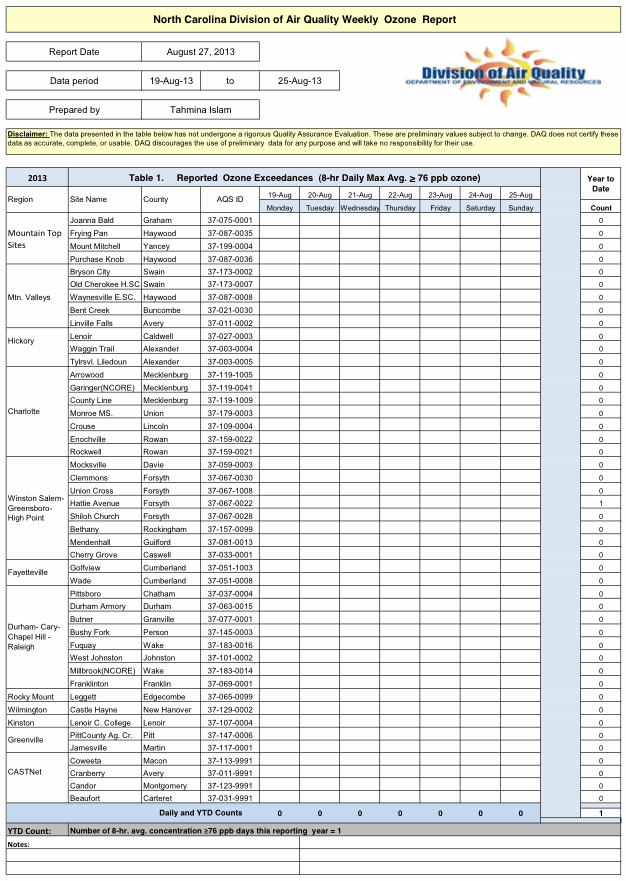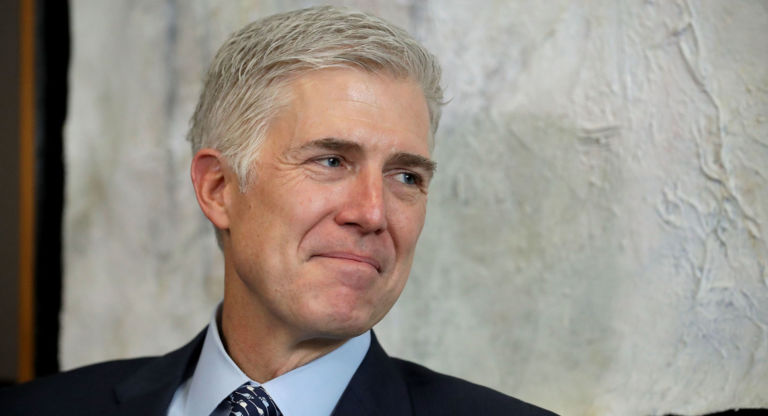Weekly John Locke Foundation research division newsletter focusing on environmental issues.
This newsletter highlights relevant analysis done by the JLF and other think tanks as well as items in the news.
1. How energy subsidy comparisons should be calculated but aren’t
Over the last several years there have been a great many claims about energy subsidies and what sources get more — renewables like wind and solar or traditional sources like oil, coal, and natural gas. Typically representatives of the renewable energy industry will cite total dollar amounts without reference to either the percentage of total output that the subsidies support or the amount of energy being generated per dollar of subsidy. Of course, since wind and solar are quite small industries relative to natural gas or coal and produce a much smaller percentage of the total energy we use, one would expect that the total amount of subsidies that the renewables receive would also be quite small in comparison. Comparing total subsidies for renewables to total subsidies for traditional energy sources and then boasting that renewables get fewer subsidies is like Rhode Island comparing its total state budget to New York’s and boasting that, since it spends less, it somehow has a smaller, more efficient government. Everyone would immediately point out that what has to be compared is per capita spending, not total spending.
Recognizing what should be obvious, people on the other side of the debate typically counter by examining the amount of government subsidies going to renewables vs traditional energy weighted by the amount of energy that those sources produce.When this is done, the numbers flip quite dramatically. On a per unit of energy basis, the amount of subsidies going to wind and solar power are dramatically higher than those that go to traditional forms of energy. (See graph below by Rob Bradley and full essay here.)

Direct Federal Financial Interventions and Subsidies in Energy in Fiscal Year 2010, July 2011, http://www.eia.gov/analysis/requests/subsidy/pdf/subsidy.pdf
My point, though, is not to wade into the middle of this debate but to argue that, while focusing on subsidies per unit of energy output is appropriate, the problem with both of these approaches is that they are looking at gross subsidies when, from the perspective of economic analysis, they should look at net subsidies. By net subsidies I mean the monetized value of policies that subsidize the relevant industries minus the monetized value of policies that penalize those industries.
From the perspective of basic economics the point is to net out the value of those policies that artificially increase supply or demand,the subsidies, from the value of those that would artificially decrease supply or demand, the penalties. "Artificially" here refers to reasons not based on actual changes in scarcity or consumer preferences, but rather influenced by, for example, taxes, subsidies, mandates, or regulations.
So what would be considered in such a calculation? On the subsidies side of the ledger one would include not only direct government transfers and tax breaks but also the monetized value of mandates to use minimum amounts of given energy sources. This would include renewable portfolio standards and minimum requirements for ethanol in gasoline. Also, one would have to include the use of public lands or bodies of water that are not compensated for at a market rate. All of these would cause supplies to be greater than they otherwise would be.
On the penalty side of the ledger one would have to include not only direct taxes but also the costs of energy source specific regulations,including the value of restrictions on land use. I refer here to things like ridge laws that keep development of wind power (and other things) off mountaintops and restrictions on drilling and mining (along coastal area, in the ANWR, etc.). Included in this mix would be specific programs implemented by utility companies in response to laws that require meeting certain "energy efficiency" standards with the intent of decreasing the demand for energy overall. Event hough these programs often involve subsidies, they should be considered a penalty. While subsidizing the use of certain kinds of appliances or the reduction in energy usage, their purpose is to reduce demand for traditional energy sources such as coal and natural gas. This can be seen in North Carolina’s renewable portfolio standard where the renewable standard can be met either by transferring demand to renewables such as wind and solar or by reducing demand generally (energy efficiency). The message is that you can use either renewables or nothing at all.
While this would be the right formulation for calculating and comparing subsidies, no one, to my knowledge, has done it. Part of the reason is that it would be difficult, but it would not be impossible. Reasonable estimates could be made. My guess is that, with the costs associated with environmental regulations and all the restrictions on drilling and exploration all around the US, the numbers showing greater subsidies for renewables would be even more dramatic than they are now. Certainly with coal it is becoming quite clear that the penalties are outweighing the subsidies as coal mines and coal fired power plants are closing due to new regulations.
2. 2013 Ozone Report — the good news continues
The2013 ozone season began on April 1 and, as in the past, each week during the ozone — often called smog — season this newsletter will report how many, if any, high ozone days have been experienced throughout the state during the previous week, where they were experienced, and how many have been recorded during the entire season to date. According to current EPA standards a region or county experiences a high ozone day if a monitor in that area registers the amount of ozone in the air as 76 parts per billion (ppb) or greater. The official ozone season will end on October 31. All reported data is preliminary and issued by the North Carolina Division of Air Quality, which is part of the state’s Department of Environment and Natural Resources. During the period from August 19-25 there were no high-ozone days recorded. For the state as a whole there has been only 1 high ozone day on one monitor recorded in 2013.
The table below shows all of North Carolina’s ozone monitors and the number of high ozone days for the week and the year to date.

Click here for the Environment Update archive.


